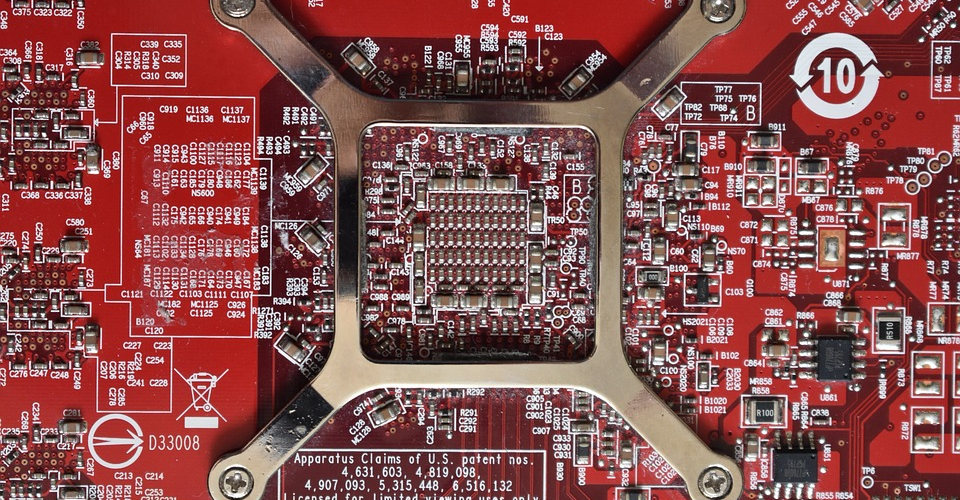Nvidia GPU Comparison: The Best Graphics Card for Your 2020 Build
There are a lot of options when it comes to graphics cards, and as someone who is building a system, this can get a little confusing. The GPU landscape has dramatically changed with the entry of Nvidia’s RTX 20 series, the first cards that support ray tracing. On the mainstream end, the GTX Turing 16 series, is also shaking up the market.
If you are building a gaming system in 2020, this is definitely the best time to do it since you do have a lot of choices. Remember, though, that the best graphics card for your build is necessarily not the most powerful and most expensive one.
In the Nvidia GPU scene, there are a lot of different cards available. For sure, you have high-performance cards, but you also get the value and budget options that are going to give you a decent amount of performance that could satisfy your gaming needs.
Let’s look at these graphics cards and see which one is the best fit for your gaming needs and build. Whether you are looking to push 4K or VR, or maximize your FPS for competitive games, there is definitely an Nvidia GPU out there for you.
RTX 20 Series
Nvidia’s RTX series is the most powerful line of consumer GPUs available in the market. These are definitely the best ones to get if you are building a gaming PC in 2020. This generation of graphics cards comes with the latest technology that renders lighting in a different way called ray tracing.
Here are the specifications of each card so you have an idea on how they will perform:
| RTX 2060 | RTX 2070 | RTX 2080 | RTX 2080 Ti | |
|---|---|---|---|---|
| CUDA Cores | 1,920 | 2,304 | 2,944 | 4,352 |
| Base Clock | 1,365 Mhz | 1,410 Mhz | 1,515 Mhz | 1,350 Mhz |
| Boost Clock | 1,680 Mhz | 1,620 Mhz | 1,710 Mhz | 1,545 Mhz |
| Memory Size | 6 GB | 8 GB | 8 GB | 11 GB |
| Memory Type | GDDR6 | GDDR6 | GDDR6 | GDDR6 |
| Memory Speed | 14 Gbps | 14 Gbps | 14 Gbps | 14 Gbps |
| Memory Bandwidth | 336 GB/s | 448 GB/s | 448 GB/s | 616 GB/s |
| Bus Width | 192-bit | 256-bit | 256-bit | 352-bit |
| GPU Power (TDP) | 160 W | 185 W | 215 W | 250 W |
| Ray Tracing Rays per Second | 5 Billion | 6 Billion | 8 Billion | 10 Billion |
| RTX Operations per Second | 37 Trillion | 42 Trillion | 57 Trillion | 76 Trillion |
| Retail Price | $349 CHECK PRICE | $529 CHECK PRICE | $739 CHECK PRICE | $1,299 CHECK PRICE |
High-Performance Cards
These are some of the best performing graphics cards in the market today. Compared with the previous generation, Nvidia’s 10 series, they are definitely a step up. They are also significantly better at handling ray tracing compared to their last generation counterparts. Looking at raw performance, they are generally 20 to 30 percent faster than the previous generation.
Ray Tracing and DLSS
Using the Turing architecture as its backbone, one of the most highlighted features of these new graphics cards is its ray tracing capabilities. This is a light rendering technique that produces unbelievably, realistic lighting effects. Essentially, what this does is “trace” the path of light, and simulate how it behaves when it hits particular virtual objects.
Ray tracing provides you lifelike shadows and reflections, along with better scattering. This technique dramatically improves how in-game graphics look but at the cost of computing power. The RTX 20 series is definitely a start, and you will see a lot more improvements in later technologies.
Another intriguing feature of the 20 series cards is DLSS or deep learning super sampling. It sounds a bit deep, but what this does is that they effectively use AI to simulate higher resolution rendering without asking for more computational power. This technology is going to give you better game performance at higher resolutions like 4K without needing a lot of hardware. Even the entry-level RTX 2060 card will provide you with decent 1440p or 4K framerates.
Game Performance and Benchmarks
| RTX 2060 | RTX 2070 | RTX 2080 | RTX 2080 Ti | |
|---|---|---|---|---|
| Average 1080p FPS | 112 | 125 | 142 | 165 |
| Average 1440p FPS | 78 | 91 | 106 | 126 |
| Average 4K FPS | 46 | 55 | 62 | 77 |
Super Family
The RTX 20 Super series are unlocked versions of their regular counterparts, giving them more cores and higher clock speeds. Performance on these cards can be up to 25% faster than the original RTX 20 cards.
| RTX 2060 Super | RTX 2070 Super | RTX 2080 Super | |
|---|---|---|---|
| CUDA Cores | 2,176 | 2,560 | 3,072 |
| Base Clock | 1,470 Mhz | 1,605 Mhz | 1,650 Mhz |
| Boost Clock | 1,650 Mhz | 1,770 Mhz | 1,815 Mhz |
| Memory Size | 8 GB | 8 GB | 8 GB |
| Memory Type | GDDR6 | GDDR6 | GDDR6 |
| Memory Speed | 14 Gbps | 14 Gbps | 15.5 Gbps |
| Memory Bandwidth | 448 GB/s | 448 GB/s | 496 GB/s |
| Bus Width | 256-bit | 256-bit | 256-bit |
| GPU Power (TDP) | 175 W | 215 W | 250 W |
| Ray Tracing Rays per Second | 6 Billion | 7 Billion | 8 Billion |
| RTX Operations per Second | 41 Trillion | 52 Trillion | 63 Trillion |
| Retail Price | $399 CHECK PRICE | $549 CHECK PRICE | $749 CHECK PRICE |
Game Performance and Benchmarks
| RTX 2060 Super | RTX 2070 Super | RTX 2080 Super | |
|---|---|---|---|
| Average 1080p FPS | 119 | 132 | 150 |
| Average 1440p FPS | 85 | 98 | 113 |
| Average 4K FPS | 50 | 58 | 68 |
Titan RTX
Nvidia’s Titan series are the ultimate versions of their GPUs. In this case, this is the fastest PC graphics card built with similar technology but turned everything to the max. You can definitely play the latest games with this graphics card, but its raw power could be put to excellent use in machine or deep learning and 3D graphics rendering.
| Titan RTX | |
|---|---|
| CUDA Cores | 4,608 |
| Base Clock | 1,350 Mhz |
| Boost Clock | 1,770 Mhz |
| Memory Size | 24 GB |
| Memory Type | GDDR6 |
| Memory Speed | 14 Gbps |
| Memory Bandwidth | 672 GB/s |
| Bus Width | 384-bit |
| GPU Power (TDP) | 280 W |
| Ray Tracing Rays per Second | 11 Billion |
| RTX Operations per Second | 84 Trillion |
| Retail Price | $2,449 CHECK PRICE |
Game Performance and Benchmarks
| Titan RTX | |
|---|---|
| Average 1080p FPS | 170 |
| Average 1440p FPS | 130 |
| Average 4K FPS | 78 |
GTX 16 Series
Nvidia’s GTX 16 series released at the same time as their RTX 20 series and is more designed to cover the entry-level and mid-range market. These GPUs are also based on the Turing architecture but without the DLSS and Ray Tracing cores on their more expensive counterparts in the 20 series range.
Here are the specifications of each GTX 16 series GPU so you have an idea on how they will perform:
| GTX 1650 | GTX 1660 | GTX 1660 Ti | |
|---|---|---|---|
| CUDA Cores | 896 | 1,408 | 1,536 |
| Base Clock | 1,485 Mhz | 1,530 Mhz | 1,500 Mhz |
| Boost Clock | 1,665 Mhz | 1,785 Mhz | 1,770 Mhz |
| Memory Size | 4 GB | 6 GB | 12 GB |
| Memory Type | GDDR5 | GDDR5 | GDDR5 |
| Memory Speed | 8 Gbps | 8 Gbps | 12 Gbps |
| Memory Bandwidth | 128 GB/s | 192 GB/s | 288 GB/s |
| Bus Width | 128-bit | 192-bit | 192-bit |
| GPU Power (TDP) | 75 W | 120 W | 120 W |
| Retail Price | $169 CHECK PRICE | $219 CHECK PRICE | $275 CHECK PRICE |
Performance
Although made with the same architecture, the GTX 16 series cards are typically not as powerful as their RTX 20 series counterparts. Also, since this series is aimed at the low-cost budget segment, it does not have high-performance options such as the GTX 1670 and GTX 1680 models. However, it more powerful than the previous generation before it.
So, as with most Nvidia cards, this still holds true for the 16 series, where the GTX 1660 Ti comes with performance close to the GTX 1070.
Game Performance and Benchmarks
| GTX 1650 | GTX 1660 | GTX 1660 Ti | |
|---|---|---|---|
| Average 1080p FPS | 59 | 88 | 100 |
| Average 1440p FPS | 43 | 65 | 73 |
| Average 4K FPS | 25 | 38 | 43 |
Super Family
Similar to the RTX 20 series, the GTX 16 series comes with their own unlocked Super versions. These are up to 20% faster than their original counterparts and have up to 50% more performance than their previous generation counterparts. So, for example, the GTX 1660 Super is 1.5x faster than the GTX 1060.
The added performance gives you better performance with today’s most popular games and allows you to compete, pushing framerates close to 144 FPS for smoother more accurate gaming.
| GTX 1650 Super | GTX 1660 Super | |
|---|---|---|
| CUDA Cores | 1,280 | 1,408 |
| Base Clock | 1,530 Mhz | 1,530 Mhz |
| Boost Clock | 1,725 Mhz | 1,785 Mhz |
| Memory Size | 4 GB | 6 GB |
| Memory Type | GDDR6 | GDDR6 |
| Memory Speed | 12 Gbps | 14 Gbps |
| Memory Bandwidth | 192 GB/s | 336 GB/s |
| Bus Width | 128-bit | 192-bit |
| GPU Power (TDP) | 100 W | 125 W |
| Retail Price | $169 CHECK PRICE | $249 CHECK PRICE |
Game Performance and Benchmarks
| GTX 1650 Super | GTX 1660 Super | |
|---|---|---|
| Average 1080p FPS | 77 | 94 |
| Average 1440p FPS | 56 | 69 |
| Average 4K FPS | 33 | 40 |
GTX 10 Series
The GTX 10 series is a generation behind than both the GTX 16 and RTX 20 series, which run on the Turing architecture. This series is based on their Pascal microarchitecture, which pushes the boundaries on what that technology can do.
However, since it is a generation behind and comes with the older chip architecture, it does lack some performance compared to the latest Turing cards.
Here are the specifications of each GTX 10 series cards:
| GTX 1060 | GTX 1070 | GTX 1070 Ti | GTX 1080 | GTX 1080 Ti | |
|---|---|---|---|---|---|
| CUDA Cores | 1,280 | 1,920 | 2,432 | 2,560 | 3,584 |
| Base Clock | 1,506 Mhz | 1,506 Mhz | 1,607 Mhz | 1,607 Mhz | 1,480 Mhz |
| Boost Clock | 1,708 Mhz | 1,683 Mhz | 1,683 Mhz | 1,733 Mhz | 1,582 Mhz |
| Memory Size | 6 GB | 8 GB | 8 GB | 8 GB | 11 GB |
| Memory Type | GDDR5 | GDDR5 | GDDR5 | GDDR5X | GDDR5X |
| Memory Speed | 8 Gbps | 8 Gbps | 8 Gbps | 10 Gbps | 11 Gbps |
| Memory Bandwidth | 192 GB/s | 256 GB/s | 256 GB/s | 320 GB/s | 484 GB/s |
| Bus Width | 192-bit | 256-bit | 256-bit | 256-bit | 352-bit |
| GPU Power (TDP) | 120 W | 150 W | 180 W | 180 W | 250 W |
| Retail Price | $259 CHECK PRICE | $573 CHECK PRICE | $549 CHECK PRICE | $489 CHECK PRICE | $830 CHECK PRICE |
Features
Between the GTX 9 series and the GTX 10 series, there is a massive performance jump, giving gamers additional power to enjoy their favorite games in VR or 4K. This is the first series of Nvidia GPUs that can effortlessly handle both these tasks.
Graphics card drivers are also pushed to the edge to give you optimum performance whenever a new game is launched. Today, we take these for granted, but all of these features were introduced together with the GTX 10 series.
Game Performance and Benchmarks
| GTX 1060 | GTX 1070 | GTX 1070 Ti | GTX 1080 | GTX 1080 Ti | |
|---|---|---|---|---|---|
| Average 1080p FPS | 69 | 96 | 105 | 113 | 133 |
| Average 1440p FPS | 50 | 70 | 77 | 83 | 101 |
| Average 4K FPS | 29 | 41 | 45 | 49 | 60 |
Titan X
The GTX 10 series comes with its own Titan GPU, which packs in a lot of power in a similar form factor. Traditionally, Titan cards are good for games, but the high-end versions, the XX80 cards, should be enough for most games. Where these types of graphics card shine are in machine learning and other GPU compute tasks.
| Titan X | Titan Xp | |
|---|---|---|
| CUDA Cores | 3,072 | 3,840 |
| Base Clock | 1,000 Mhz | 1,405 Mhz |
| Boost Clock | 1,075 Mhz | 1,582 Mhz |
| Memory Size | 12 GB | 12 GB |
| Memory Type | GDDR5 | GDDR5X |
| Memory Speed | 7 Gbps | 11.4 Gbps |
| Memory Bandwidth | 336.5 GB/s | 547.7 GB/s |
| Bus Width | 384-bit | 384-bit |
| GPU Power (TDP) | 250 W | 250 W | Retail Price | $1,175 CHECK PRICE | $1,899 CHECK PRICE |
The Best Nvidia GPU
The best graphics card that you get for your gaming PC is not necessarily the one with the most expensive price tag. It is also not the one with the most performance. However, we know that quality and performance are indeed directly proportional to the cost of the card, but depending on your build, that might not be the case.
Let’s take a look at which GPU will fit your gaming needs:
Best Overall
ASUS ROG STRIX GeForce RTX 2080 Ti
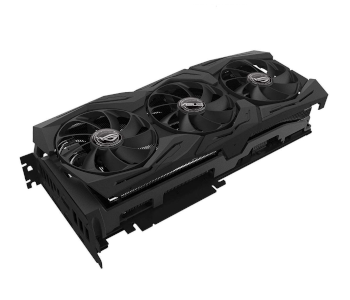
Retail Price: $1,299
Any RTX 2080 Ti will do. For 2020, this is by far the latest and most powerful consumer desktop GPU available. Nvidia’s Turing architecture allows the to pack this card with extra CUDA cores for graphics processing, Tensor cores to accelerate deep learning like DLSS, and RT cores for ray tracing.
This card is an excellent choice if you are planning to build a system that will allow you to play games at 4K resolution, 144 FPS, with HDR and G-Sync activated on your display. You will want the fastest graphics card, and this certainly fits the bill.
The best part about getting this card is that the latest games and those that are in development are looking to leverage the power, especially in terms of ray tracing of the entire RTX 20 series. So, you can definitely expect a lot more games that will take advantage of all the features of the RTX 2080 Ti.
Best High-Performance Nvidia GPUs
MSI GAMING GeForce RTX 2080 Super
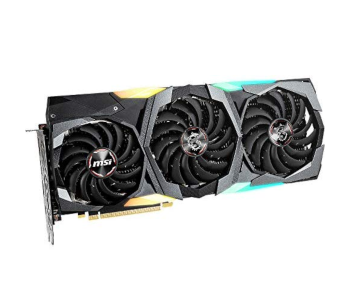
Retail Price: $749
The RTX 2080 Super is one of the best cards in the market, and it can offer you the best in terms of peak performance and price considering the RTX 2080 Ti, is significantly more expensive. This is a powerful card and will provide you excellent performance on a lot of the latest games.
The support for ray tracing among developers is definitely increasing, and this is one of the cards to pick up if you want to take full advantage of the technology. It will also give you exceptional 4K gaming performance, and even better 1440p (QHD) at a price point that is more forgiving compared to the RTX 2080 Ti.
GIGABYTE WINDFORCE GeForce RTX 2080
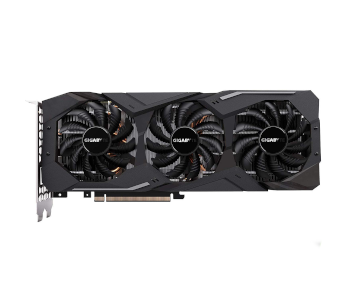
Retail Price: $739
Looking at the price point, the RTX 2080 Super with more performance is definitely a better option. Granted that the Super version of this card is more powerful with a decent jump in performance, this is not something that we would recommend out of the gate.
However, if you do not have access to get the RTX 2080 Super, this is a decent alternative. If you can also get a great deal with this GPU in the second-hand market, then by all means, grab it to upgrade your gaming PC.
Best Midrange Nvidia GPUs
MSI GAMING TWIN FROZR GeForce RTX 2070 Super
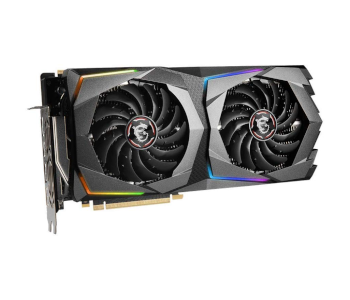
Retail Price: $549
As one of the best midrange pick-ups this 2020 for your gaming PC, the RTX 2070 Super offers both premium performance at a relatively affordable price point. It is capable of delivering performance similar to that of the RTX 2080, without the added cost.
Even if you are on a budget, this is still a convincing purchase because it will be able to give you the power that you need to play your favorite games. It also comes with ray tracing support, so you will be able to enjoy next-level graphics without breaking the bank.
As long as you are not looking for ultra-high graphics quality 4K gaming experience, the RTX 2070 Super should suffice. It is the best GPU to get for an incredible 1440p (QHD) performance at the highest graphics settings and the fastest frame rates.
EVGA SUPER XC GAMING GeForce RTX 2070
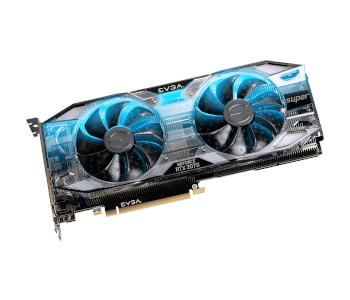
Retail Price: $529
The launch of the RTX 20 Super family, makes the RTX 2070 somewhat an odd choice. You can surely get superior speed and performance with the RTX 2070 Super compared to its original counterpart. This should be an excellent choice if you cannot get your hands on an RTX 2070 Super or looking for deals in the pre-owned market.
If this is the only GPU you can get, it will still offer you excellent performance and will allow you to play your favorite games at high graphics quality at higher frame rates.
ZOTAC GAMING ICESTORM 2.0 GeForce RTX 2060 Super
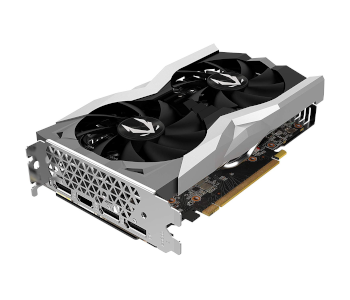
Retail Price: $399
Even though the RTX 2060 Super is listed in the midrange category, you can easily consider this a budget option. This is probably one of the best value choices you can possibly have when you are building a decent gaming PC for 2020. Its performance nearly equals that of the RTX 2070 but at a much affordable price point.
If you are looking to play games at 1080p (FHD) or 1440p (QHD) on a 144 Hz monitor, this is undoubtedly the Nvidia GPU to get. It can easily handle high to ultra-high graphics quality so you can play the latest games and have the performance headroom for future releases.
Even though it is only a generation ahead of the GTX 1080, it is about 10% faster, so you are surely getting your money’s worth with this card. On top of that, it also supports ray tracing and DLSS so you can push this to the limit and still get optimum results.
Best Budget Nvidia GPUs
MSI GAMING VENTUS XS OC GeForce GTX 1660 Ti
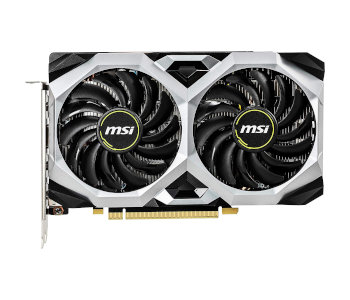
Retail Price: $275
Nvidia’s GTX 16 series is meant for the mainstream budget market. Equipped with Turing shaders, but without the ray tracing and DLSS capabilities of the RTX 20 series, the GTX 1660 Ti sits just right below the RTX 2060 in terms of performance and price.
If you are not after those features but are looking at some raw power and performance to play your favorite games, this is definitely a card that is worth considering. This is not the card to get if you are looking for top-notch 4K or VR gaming experience, but if you are satisfied with high graphics quality, high frame rate, 1080p (FHD) gaming, this is an excellent choice.
The GTX 1660 Ti can easily handle all your favorite esports titles from CS:Go, Dota 2, LoL, Overwatch, and other staples in the scene.
ASUS ROG STRIX GeForce GTX 1660 Super
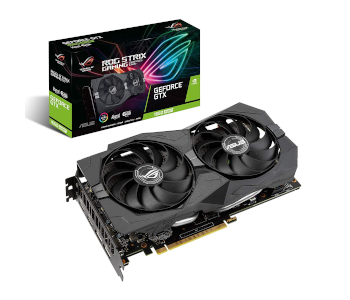
Retail Price: $249
One of the things that are going for the GTX 1660 Super is its price to performance ratio. This is, by far, the card with one of the highest statistics in that category. It performs better than the GTX 1660 and getting awfully close with the GTX 1660 Ti.
This is a card that is going to give you an excellent 1080p (FHD) gaming experience that can easily hit over 60 frames per second at medium or high graphics settings on most Triple-A games. It is also capable of giving you smoother gaming performance on most esports titles like Fortnite, CS:Go, Dota 2, Overwatch, and a lot of other games.
Since it is not an RTX card, you lose the ray tracing and DLSS features, but if you are building a budget PC that can handle most of the current games, the GTX 1660 Super should be sufficient. This is definitely a great value graphics card that is affordable but packed with power for the mainstream gamer.
Nvidia GPUs that Give You the Best Value for Your Money
Nvidia designs a lot of GPUs, and for every series, they put out a minimum of at least 4 or 5. Add the Super line into the mix, and you get a total of about 8 to 10, and they all come with a wide range of performance levels.
We just cannot give you one graphics card and tell you that it is the one that is going to offer you the most value, but instead, we are going to categorize them at different price points, giving you options depending on your budget and the amount of performance you are looking for.
Best Value Budget Option
| GTX 1660 Super |
|---|
| ✔ Excellent 1080p performance |
| ✔ Can push high to ultra graphics settings |
| ✔ Can match the GTX 1660 Ti |
| ✔ Superior price to performance ratio |
| ✔ Nvidia’s new generation Turing architecture |
| $249 CHECK PRICE |
The GTX 1660 Super is definitely our best value option among all the entry-level budget choices. Looking at price to performance ratios, it is the card that is going to give you the most bang for your buck in this category.
The other hardware that you will accompany this GPU in your build will not break the bank, giving you a more affordable system that will squeeze the most performance out of your card.
Best Midrange Value Option
| RTX 2060 Super |
|---|
| ✔ Most affordable ray tracing and DLSS card |
| ✔ Easily matches the RTX 2070 in performance |
| ✔ Solid 1080p and 1440p gaming experience |
| ✔ Push up to 144 FPS on most esports titles |
| $399 CHECK PRICE |
The RTX 2060 Super is not your ordinary entry-level graphics card. It might be classified as one since it is on the low-end in the RTX 20 series, but do not be fooled by its designation since it packs a lot of power.
It certainly goes up high in price to performance ratio comparisons because it offers a lot of value for its price. If you are looking to leverage ray tracing and DLSS but are not concerned at hitting ultra-high graphics settings, this is the card for you.
Casual gamers will surely enjoy this GPU as it is powerful to provide you smooth performance on most AAA games and hit high framerates for all competitive esports titles.
Best High-end Value Option
| RTX 2070 Super |
|---|
| ✔ Performance comes close to vanilla RTX 2080 |
| ✔ Comes with dedicated ray tracing and DLSS cores |
| ✔ Smooth 1440p performance |
| ✔ Solid 4K experience at medium to high settings |
| ✔ Effortlessly handle VR games |
| $549 CHECK PRICE |
The RTX 2070 Super is a graphics card that allows you to enjoy the ultimate gaming experience without spending a lot. It is not as expensive as the RTX 2080, but it can easily match its performance. At a price difference of about $200, that is definitely value that you can spend elsewhere on your gaming rig. This is a card that will handle anything you throw at it, including 4K, 144 Hz displays. It can even give you a smooth VR game experience so you can also get a quality headset for it.
The RTX 2070 Super is definitely on the pricier side, but if you are willing to spend a few hundred more, this is something that you can consider getting for your gaming PC.
The Graphics Card That is Perfect for Your 2020 Build
The Nvidia GPU that is perfect for your gaming PC is not necessarily the most expensive or the most powerful. Different users have diverse needs. Casual gamers might be satisfied with 1080p 60 FPS performance, while hardcore players can drop an extra hundred or two so they can play at 4K, 144 FPS, at ultra-high settings. Others might even be satisfied with a mainstream card like the GTX 1660 Super.
There is also a different niche of users who demand something a little different from their graphics cards, like content creators and graphic designers. Regardless of what your needs are, there is definitely a graphics card that is perfect for your needs.
You do not necessarily spend a ton to get an RTX 2080 Ti if you are not into graphically intensive games or not rendering videos regularly. The bottom line is that as long as a particular graphics card fits your needs and your budget, that is the perfect one to get for your PC.
Final Thoughts
Game graphics are changing fast, and technological advancements seem to happen every year. Nvidia is poised to announce their 7nm architecture, and that is definitely going to change the landscape yet again.
If you feel like you are still able to run the current games at your desired settings, then you may not need an upgrade just yet. If you are planning to build out a brand-new gaming PC, these are some of our recommendations so you can accurately gauge what your gaming preferences and needs are.

